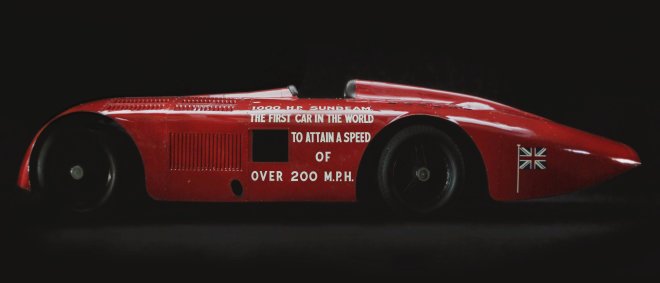Sunbeam 1000hp restoration to celebrate 90th anniversary

Sunbeam 1000hp restoration to celebrate 90th anniversary

To celebrate the 90th anniversary of the Sunbeam 1000hp breaking the 200mph Land Speed Record, the National Motor Museum will be breathing new life into one of its engines to make it run for the first time in over half a century. The restoration project will begin in time for the anniversary on March 29th, with an engine start-up planned for later in the year at Beaulieu.

The 1927 Sunbeam’s two 22.5-litre V12 aero engines, which each produced 435bhp, are in a perilous condition, with internal corrosion having caused severe damage. By painstakingly rebuilding the rear-mounted engine, using specialist knowledge and bespoke parts, the National Motor Museum engineers will recapture the sounds, sights and smells of this ground-breaking machine and help to preserve it for future generations.

On March 29th in 1927, an estimated crowd of 30,000 spectators gathered to watch Major Henry Segrave set a new World Land Speed Record by driving the iconic car at an average speed of 203.79mph at Daytona Beach in Florida. They stood in the nearby sand dunes to watch the high-speed runs along the beach.

In order to set the record, Major Segrave was required to complete two runs. Strong winds on the first outward run caused the car to skid violently, forcing him to drive into the sea to slow the car down. He was still able, however, to make the return journey. The speeds achieved on the two runs were 200.668mph and 207.015mph, giving an average speed of 203.792mph over the mile and setting a new Land Speed Record – the first over 200mph.

Major Segrave had challenged established record holder Sir Malcolm Campbell the year before, by setting a new World Land Speed Record of 152.33mph in a 4-litre supercharged Sunbeam. However, with his sights set on breaking the 200mph barrier, he had needed a much more powerful machine. The resulting Sunbeam 1000hp, built by the Sunbeam Motor Company at their Wolverhampton works, was one of the first cars designed and built to be the fastest land-based vehicle.

The driver’s cockpit of the Sunbeam 1000hp was positioned between the two V12 Sunbeam Matabele aero engines, which fed their power to the wheels via a three-speed gearbox and chain drive transmission. The total weight of this massive car was well over 3 tons, while its unique streamlined bodywork earned it the affectionate nickname ‘The Slug’.

The Sunbeam 1000hp went on display at Beaulieu in the Montagu Motor Museum, the forerunner to the National Motor Museum, in 1958 on loan. It was purchased by Edward, Lord Montagu in 1970 and now proudly sits at the heart of the For Britain and For The Hell Of It display in the museum.






